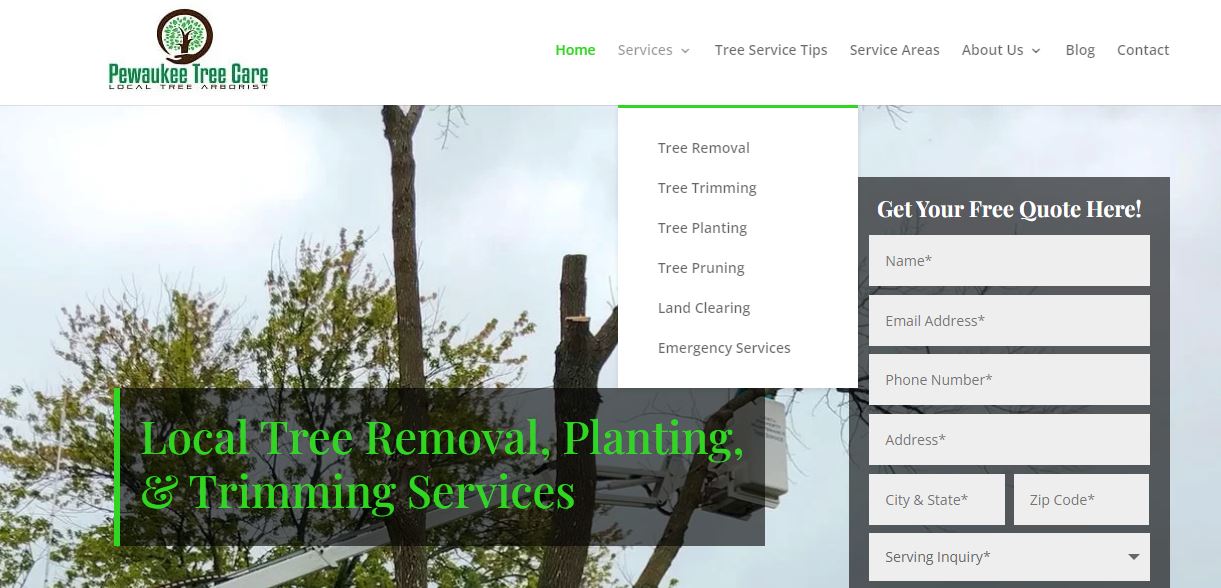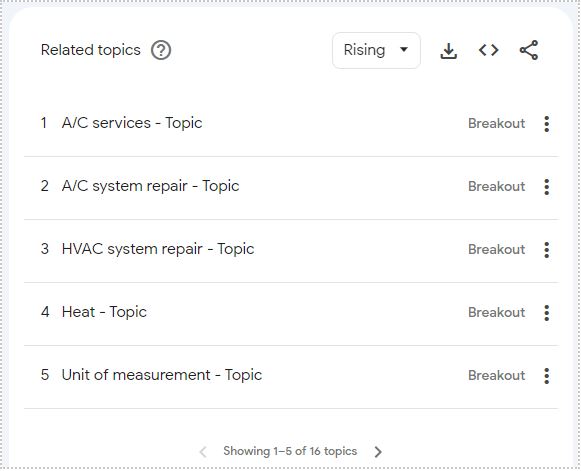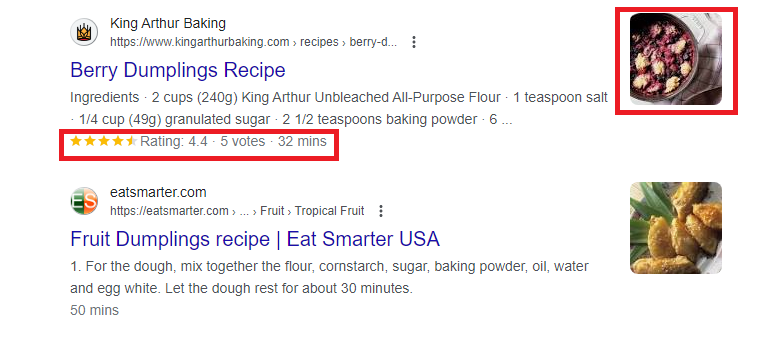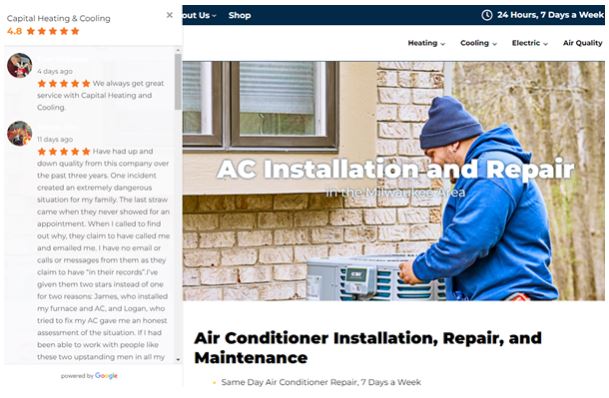As a business that relies on local clientele, your website should rank for local search results.
But you will hardly rank locally if your site hasn’t been optimized for local SEO.
For business owners and marketers with little local SEO experience, we’ve provided tips on how to boost your website’s local presence and generate leads:
- Build location and service pages
- Update your website architecture
- Optimize on-page SEO for local
- Target the right local keywords
- Get backlinks from local sites
- Update NAP citations on your website
- Use local business schema
- Add Google reviews on your site
- Build local authority with local content
Build location and service pages
Service and location pages are almost a trademark of local SEO.
Businesses that offer skilled services, e.g., mechanics, lawyers, home improvement contractors, medical institutions, etc., have to create service pages for each of their main offerings.
The homepage won’t rank for all the services you offer. A distinct service page, on the other hand, is more likely to rank and attract people in need of that service.
Follow these tips when creating service pages:
- Provide details proving your expertise, e.g., common problems you solve, years in the industry, your typical process for each job, your unique approach/qualifications that set you apart, etc.
- Provide social proof (reviews) of customers that have enjoyed that particular service.
- Touch on commonly discussed topics/frequently asked questions, and provide answers.
- Keep the content brief and scannable; no visually tiring long blocks of text
How to build location pages
Location pages are a competitive necessity. Some businesses in less competitive industries and regions manage to rank for multiple locations without creating location pages, but this is often the exception and not the rule.
If you want to maintain a relevant search presence within a particular location in the long run, then create a location page.
To get the most out of your location pages:
- Mention the services you offer in said location.
- Use the locally recognized vernacular of that region
- If your business has a branch in that location, embed a map view of the branch.
- If your knowledge of the region’s peculiarities helps you better serve customers, mention this and be specific.
- Mention the location name in the H1 heading and the page’s meta-data.
Update your website architecture
A good local business website makes it easy for users to find the service/product they need right from the homepage.
Whether you’re a tree removal business that offers only 6 services:

Or a law firm with over 40 practices…

…your offerings should be immediately accessible.
Modern users are fickle and have a low attention span. You want to reduce the number of clicks needed to get what they want, or risk frustrating them enough to leave your site.
Your navigation menu may be placed horizontally at the top of the website or vertically on one side. Either way, it has to be intuitive. Organize the sub-categories in practical order.
The most important pages should be listed on the navigation menu. This will differ according to industry and the size of your business, but typically, the following pages are the main features:
- Offerings/services pages
- Portfolio
- About
- Contact
There is no official rule governing how your site should be structured, but just make sure it’s intuitive and easy to navigate for your ideal customers.
Internal linking will be a big part of your website’s architecture.
You can do more than link your homepage and contact page to every main offering and location page.
When choosing internal links for a page, think about how relevant the pages you’re linking to will be to users scanning the page.
For instance, will someone on your AC maintenance page be interested in your blog about how to change air filters? It’s quite likely.
Target the right local keywords
This sounds obvious, but targeting keywords that generate results might require more subtlety than many think.
Are you avoiding keywords with less than 100 monthly searches? You might want to reconsider that approach.
Depending on your industry, some keywords with meager search volume—less than 20 searches per month—may be gold mines.
We’ve tried this tactic for a few clients in different verticals. The results were great. The sites ranked much faster thanks to less competition, but most importantly, the clients acquired high-value customers from the stream of leads generated.
If you’re not very familiar with local keyword research, then check out our local keyword research guide.
To discover more ideal keywords, also ask yourself the following:
- Does the city/region use keywords with local vernacular?
- Does your industry have seasonal keywords you’re not targeting?
Keywords with local vernacular
It pays to understand the local vernacular in whatever region you’re selling to, because sometimes what you’re targeting may simply not be what the locals are typing into Google.
In the case of location modifiers, for instance, some regions don’t always use the official city name in their searches. Keywords with a locally recognized city name tend to have far better search volumes in this situation.
Your keyword tool may not always uncover gems like this. You might need to be a local yourself or a bit more human with your research, e.g., asking your existing customers in said regions for ideas.
Targeting localized keywords is not a guarantee of success, but speaking to your customers in their own language can give you an edge over competitors.
When applied with the right keyword and content strategy, this tactic can attract more local customers.
Keywords with seasonal volume
If your business offers services that only enjoy high demand at a particular time of the year, then you should target those keywords accordingly.
You might miss seasonal keywords if you have little knowledge of the industry and location you’re serving.
But this is where Google Trends can help. It showcases the search popularity of keywords over time, helping you find keywords that trend at particular times of the year
For instance, I discovered that “AC repair” is popular in Wisconsin between May-August by checking the search data over a period of 5 years.

When I scroll down, I also find more trending keyword ideas:

Breakout means a keyword has recently grown more than 5000% in search volume.
Once you discover seasonal keywords you want to target, create content pieces and pages for them before their peak season. You want to give the search engine time to index, understand, and showcase your content in the SERPs.
Optimize on-page SEO for local
On-page SEO defines a web page’s identity and influences how it ranks. So, if your page is to have local relevance, this means including local keywords and location names in on-page SEO elements: meta-data, headings, and the URL.
Remember, the essence of optimizing on-page is not to include keywords but to accurately describe what the page is about.
So, if you’re building a page to serve people in Madison, your on-page should contain the word “Madison.” If you’re building an AC installation service for residents in Brookfield, then your on-page should contain “AC installation” and “Brookfield.”
It’s old news that meta descriptions are not a ranking factor and that title tags are not a critical ranking factor.
Instead of stuffing the meta-descriptions with keywords hoping to rank, they should be written for people first—convincing, honest, and descriptive.
Get backlinks from local sites
Backlinks from websites in your region and niche can greatly improve your local relevance and rankings.
In our experience, it’s an effective tactic. A notable example is one of our clients: a decorative concrete contractor in the construction industry.
Local blogs in the construction niche linked to this client’s site, and this was influential in driving them to the No. 1 spot for multiple keywords. Read the full case study.
Backlinks from reputable local sites and blogs in your industry are a good signal to Google. The more of these signals you send, the higher your chances of ranking above competitors.
Like most off-page SEO, local backlinking is easier said than done. But here are a few tips:
- Collaborate with local influencers or bloggers; guest-post on their blog or sit in for interviews. You can make this happen by reaching out via email and offering to share your real-life expertise as a business owner in the industry.
- Start a blog and position yourself as an expert on local topics. This way, you attract backlinks naturally.
- Collaborate with adjacent/related businesses by featuring on each other’s blogs. One way to do this is through a mutual review of your products/services. You can also offer your insights on a piece of content they’re creating, and vice versa.
- Host a local event and reach out to local publications and news sites for promotion.
The great part is that doing all of these things also increases your local popularity and makes more potential customers aware of you.
Acquiring links from local niche sites is not the only way to boost your backlink profile. You can also:
- Link to your site on social media.
- Get listed in local business directories like Google, Bing, and Yelp.
- Get listed in industry-specific directories like HomeAdvisor and Angi.
Update NAP citations on your website
NAP is short for Name, Address, and Phone number. Include it on your website, and make sure it’s listed exactly the same way it appears on your Google listing and other directories, down to the punctuation.
The accuracy of your NAP data affects how Google evaluates your local business’s relevance for search queries.
Inaccurate information can “confuse” the search engine (and users) and undermine your authenticity. So, you want to make sure this info is accurate across all directories and sites where it is mentioned.
If you have branches in multiple locations, include the relevant NAP on each location page.
Use local business schema
Schema markup helps search engines understand the content on your website, thus improving how your website is displayed in search results.
With local business schema, search engines can process relevant details about your business and display these in an enhanced manner on the SERPs.
There’s schema for reviews, opening hours, address, phone number, and so on.
Schema was implemented on this food recipe page:

As a result, the page is displayed with rich results like ratings, timeframe, and an image.
There’s no evidence to suggest that schema directly influences rankings, but the rich results it generates have been proven to improve clickthrough rates, which are a direct ranking factor.
There are different properties of local business schema you can implement on your site. Check out Google’s guide explaining the different properties and how to apply them.
Add Google reviews on your site
98% of consumers like to see reviews when researching local businesses, according to BrightLocal’s Consumer Review Survey of 2023.
Making your Google reviews visible on your website adds a lot of credibility and can increase conversions.

You can embed a Google review widget like the one above on your website by:
- Using a plugin (usually for WordPress sites).
- Using a review widget service.
- Manually inputting the code yourself (usually for HTML sites).
While it sounds technical, the third option is often the only truly free method.
Build local authority with local content
Local content is only going to rise in significance as Google continues to place more emphasis on websites that can demonstrate E-E-A-T.
E-E-A-T stands for Expertise, Experience, Authority, and Trustworthiness.
Basically, local content marketing is a great investment. Here are 3 solid reasons why:
- When done well, it can naturally attract quality backlinks, which improve your website’s authority and, consequently, ranking.
- It increases trust in your expertise and can position you as a local authority in your niche.
- It can attract local prospects who become leads.
- Google is seeking to reward websites that can demonstrate real-life experience, so teach what you know.
- Demonstrate your expertise by including authentic tutorials or explanatory videos and pictures in your content.
- Use local keyword research to discover questions the locals need answers to, and let these inspire your content.
- Create content based on popular issues or questions customers have asked you, even if these queries have zero search volume.
- Don’t create content in anonymity. Have an author’s section on each article introducing you or any member of your staff as the writer, editor, or contributor. This goes a long way to prove EEAT.
- Internally link related content pieces to help readers and boost your site’s relevance.
Boost your local search rankings with a local SEO strategy
If you have little experience with local search, you might be uncertain about how to get results.
Well, to start with, you need a strategy. Check out our local SEO strategy guide to get started.
You would also want to learn how to optimize your Google Business Profile to dominate the local map pack.










